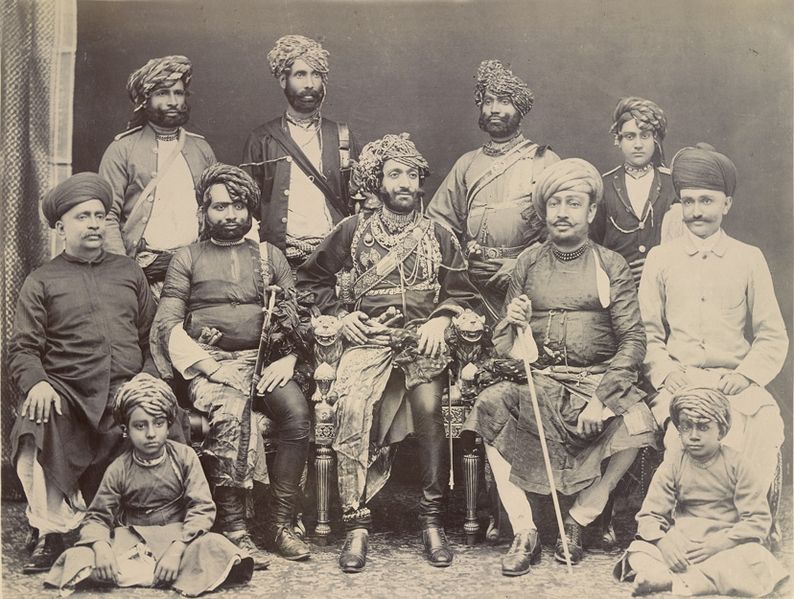When the Constitution came British Crown paramountcy had already lapsed. The Indian Princely States were able to make several reservations in their own favour. They were anxious to frame their own Constitutions but many States could not withstand pressure of the Ministry of States and thought better of merging with such reservations as the Merger Agreements made in their favour.
The other States like Hyderabad, Mysore and Jammu & Kashmir on the one hand and the United States or Union of States on the other also dropped the idea of separate Constitutions for themselves (except Jammu & Kashmir) and integrated with India, accepting the Indian Constitution. The Rulers were allowed to get a Privy Purse free of taxes on income and to enjoy personal property and privileges. Articles 291, 362, 366(15) and (22) were included to recognise those conditions on which surrender of power had taken place.
Article 363 was included to keep certain matters away from Courts and now the most important question is what was granted to the Rulers by the Constitution and how for their rights could be enforced in a Court of Law. Paramountcy as such was no more as there was no paramount power and no vassal. The Rulers had lost their territories and their right to rule and administer them. They were left only a recognition of their original title, a privy purse, their private properties and a few privileges. These rights were the only indicia of their former soveignty but they enjoyed them by the force of the Constitution although in every respect they were ordinary citizens and not potentates.
The merger Agreement
The Merger agreements were much simpler documents. As an illustration It may refer to the Bilaspur Merger agreement. It was executed on the 15th August 1948 by the Raja of Bilaspur. It consisted of five articles.
- By the first article the Raja ceded to the Dominion government full and exclusive authority, jurisdiction and powers for and in relation to the governance of the State, agreeing to transfer the administration on October 12, 1948.
- By article 2 the Raja was to receive annually a sum of Rs. 70,000/as privy purse free of taxes. The sum included Rs. 10,000/- as an allowance for the Yuvraj. These amounts were to cover all expenses and were not to be increased nor reduced for any reason whatsoever.
- By article 3 the Raja was entitled to the full ownership, use and enjoyment of all private properties (as distinct from State properties) belonging to him, and he was to furnish an inventory of such properties. In case of dispute the matter was to be referred to such officers with judicial experience as the Dominion government might nominate and the decision was to be binding on both parties.
- By article 4, the Raja, the Rajmata, the Yuvraj and the Yuvrani were to enjoy all personal privileges enjoyed by them within and without the territories immediately before the 15th day of August 1947.
- By article 5 the Dominion government guaranteed the succession, according to law and custom to the gaddi of the State and to the Raja’s personal rights, privileges dignities and titles.
The acceptance of Merger Agreements
The Merger agreement was signed by the Raja and Mr. V. P. Menon, Secretary in the Ministry of States. Although the Merger Agreement of the Raja of Bilaspur sufficiently illustrates the line followed it may be mentioned here that some of the Merger Agreements had more clauses than the one noticed.
In the Merger Agreement of the Maharao of Kutch there were other articles such as immunity for past acts of the Maharao in his personal capacity or otherwise and also a guarantee for continuance in service of the permanent members of the Public services of Kutch and for their conditions of service, pensions and leave salaries and immunity for past acts.
In the Bhopal Merger Agreement, the Nawab was to receive Rs. 11,00,000/- as Privy Purse but each of his successors was to receive only Rs. 9,00,000/-. Article IV however provided that the income derived annually from the share of the Nawab in the original investment by Qudsia Begum in the Bhopal State Railway, which share was agreed to be Rs. 5,50,000, was to be treated as the personal income of the Nawab and to be paid by the Government of India to the Nawab and his successors.
Article VII provided that the succession to the throne of Bhopal State would be governed by and regulated in accordance with the provisions of the Act known as “The succession to the Throne of Bhopal Act of 1947”, and then in force in the Bhopal State. The Government of India further agreed that all rights and privileges secured by the Agreement to the Nawab would be continued to his successor.
The course of historical events is different according to the States emerged in or merely acceded to the Dominion. The merged States were either incorporated in the existing Governor’s Provinces or, were administered centrally as Chief Commissioner’s Provinces.
Reference
H. H. Maharajadhiraja Madhav Rao vs Union Of India; 1971 AIR 530, 1971 SCR (3) 9
